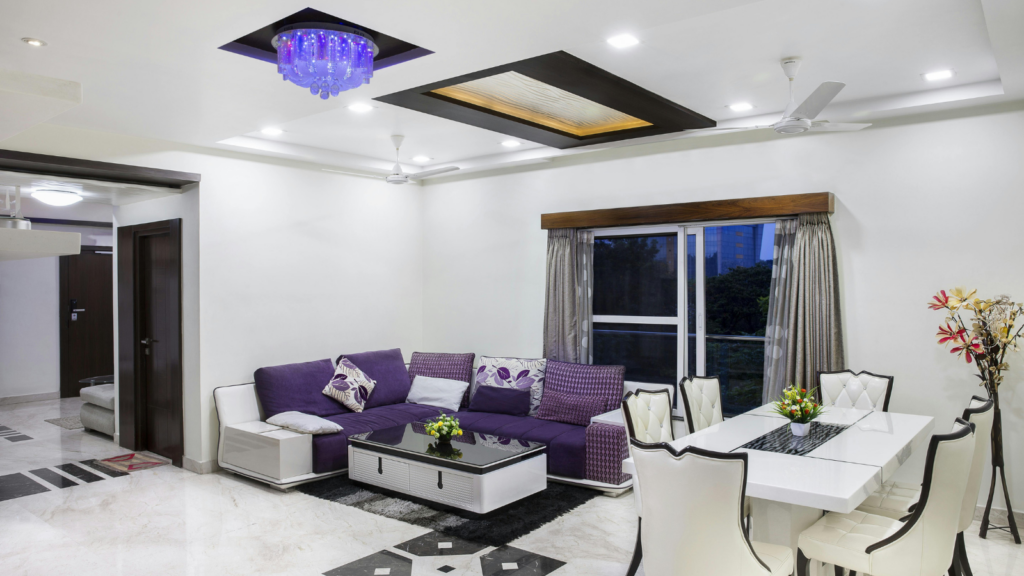In the ever-evolving world of design, interior design remote jobs are gaining unprecedented traction. They’re a testament to how the digital age is reshaping traditional industries. This shift not only offers more flexibility to designers but also expands the horizons of their creativity.
The rise of remote work in the interior design industry isn’t a mere trend—it’s a revolution. It’s changing the way designers work, collaborate, and most importantly, create. So, whether you’re an aspiring designer or a seasoned professional, it’s time to embrace the future of design. Dive in with us as we explore the realm of interior design remote jobs.
Interior Design Remote Jobs

Interior design remote jobs deliver numerous advantages, contributing to their rising popularity. Increased work-life balance, fewer commuting issues, and more diverse geographical opportunities rank among the top benefits. Digital technologies serve as vital enablers, allowing designers to execute their jobs from virtually anywhere. This development not only reshapes traditional design practices but also offers an expansive playground for creativity. It catapults the scope of design work beyond geographic boundaries, consolidating a global village of design thinkers and implementers. So whether you’re an experienced designer or just starting, exploring interior design remote jobs seems both a forward-looking and practical move.
Key Benefits of Remote Interior Design Jobs
- Employment Equality: Interior design remote jobs create an equalized platform for every intending design professional, irrespective of geographical location or physical mobility. Thus, these jobs extend opportunities to talent globally.
- Diminished Operational Costs: Companies offering remote jobs cut down on overheads significantly. Rent, utilities, and office supplies which are common expenses in a traditional office setup, get eliminated in a remote work scenario.
- Personal Wellness: The digital workspace recognizes and respects the need for a work-life balance. With interior design remote jobs, the hassle of commuting gets replaced with a comfortable and flexible work environment, supporting mental and physical well-being.
Challenges of Remote Work in Interior Design
While the benefits of interior design remote jobs are notable, they also introduce certain trials. The shift towards a digital platform brings about an escalation in communication barriers. Clear articulation of design ideas becomes a critical task, requiring a robust technology infrastructure.

Also, an essential aspect is the reliance on digital tools. These tools, though handy, often fall short in imitating tactile experiences. For designers, fabric texture, material detail and color precision play crucial roles. Losing the physical contact can mean compromising the depth of their creativity.
Another challenge faced is maintaining productivity. Without traditional workplace boundaries, balling work tasks with home responsibilities becomes a task. Despite the improved work-life balance, identifying ways to structure their day and maintaining working hours is a challenge designers grapple with.
Lastly, a lot of remote work is considered freelance. In that regard, the amount of income generated can vary and arrive at very irregular intervals, making any sort of financial planning a bit more difficult. Beyond that, there are the tax implications that freelancers have to contend with. However, that part isn’t as hard thanks in part to Taxcaster and many other tax tools readily available.
Essential Tools for Remote Interior Designers
In the realm of interior design remote jobs, digital tools stand paramount. They tackle communication gaps, recreate palpable experiences, and boost productivity. 3D modeling software, for instance, helps create lifelike renderings of designs. Programs like SketchUp, AutoCAD, or Revit bridge the visual communication gap.
Project management tools such as Trello or Asana enhance team coordination, maintaining clarity across deadlines and goals despite geographical distances. Designers often enlist virtual reality tools too, in their pursuit of recreating tactile experiences.
For improved communication, video conferencing apps like Zoom or Google Meet prove indispensable. They aid in real-time discussions, fostering immediacy and interaction in feedback. Cloud storage platforms like Google Drive or Dropbox offer centralized access to design files, ensuring seamless collaboration.
How to Find Remote Interior Design Jobs

Navigating the digital landscape for interior design remote jobs necessitates a strategic approach. Job seekers harness online platforms that cater to remote work opportunities to explore listings, including general career websites such as Indeed, LinkedIn, and Glassdoor. However, focusing on specialized platforms like Behance, Coroflot, or Dribbble connects them to industry-specific job openings more effectively. Tailoring portfolios to demonstrate skill and experience in digital design tools – from 3D modeling software to project management platforms – enhances their appeal to potential employers. Additionally, leveraging professional networks through forums and social media could reveal hidden remote job opportunities.
Must Know on Interior Design Remote Jobs
Embracing interior design remote jobs can be a game-changer in today’s digital era. It’s a path that brings creativity and flexibility to the forefront, transforming the way designers work and live. Despite the challenges, with the right tools and strategies, it’s possible to navigate this new landscape. By harnessing platforms like Behance, Coroflot, and Dribbble, tailoring portfolios to the digital realm, and tapping into professional networks, designers can unlock a world of remote opportunities.
